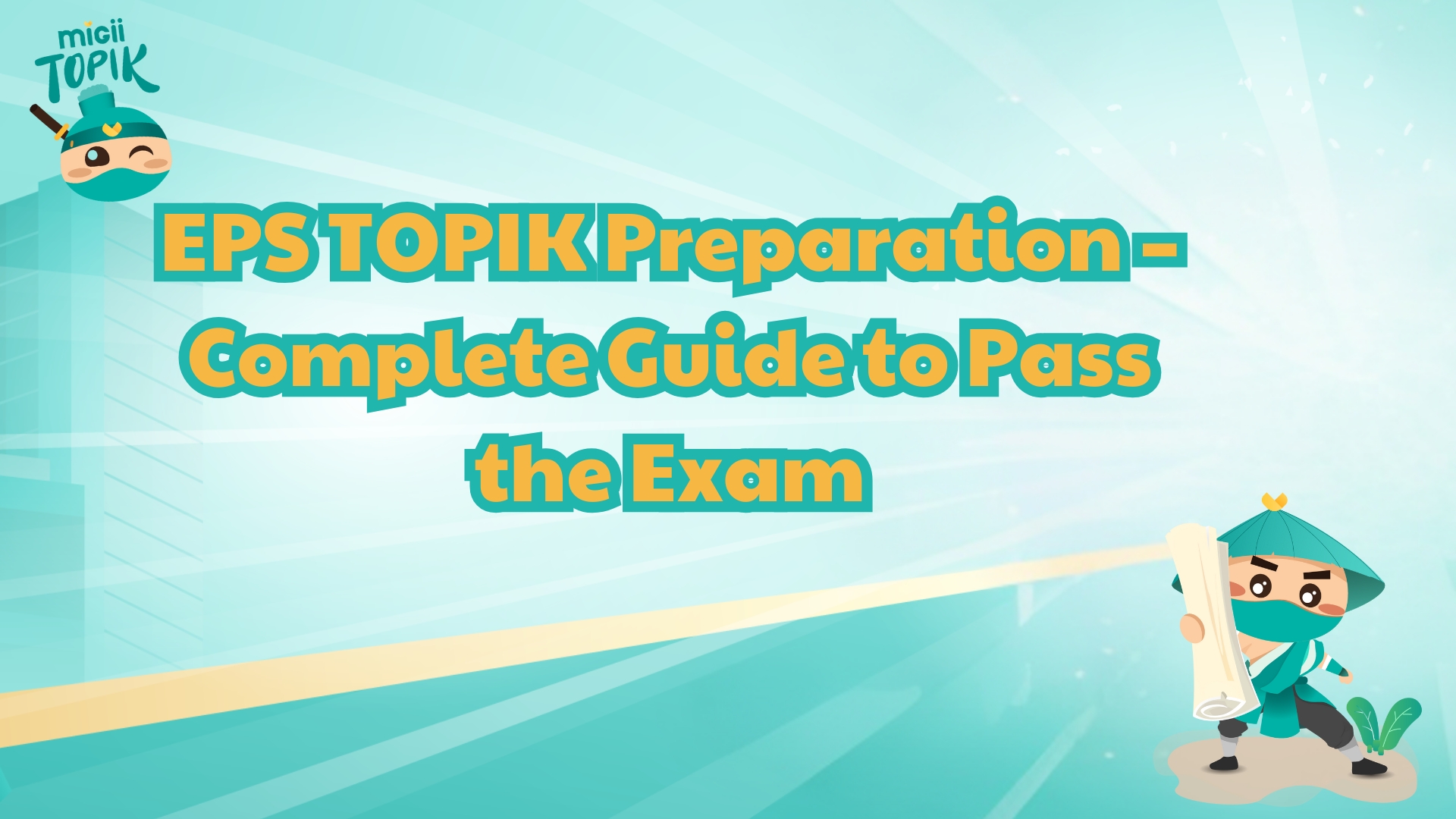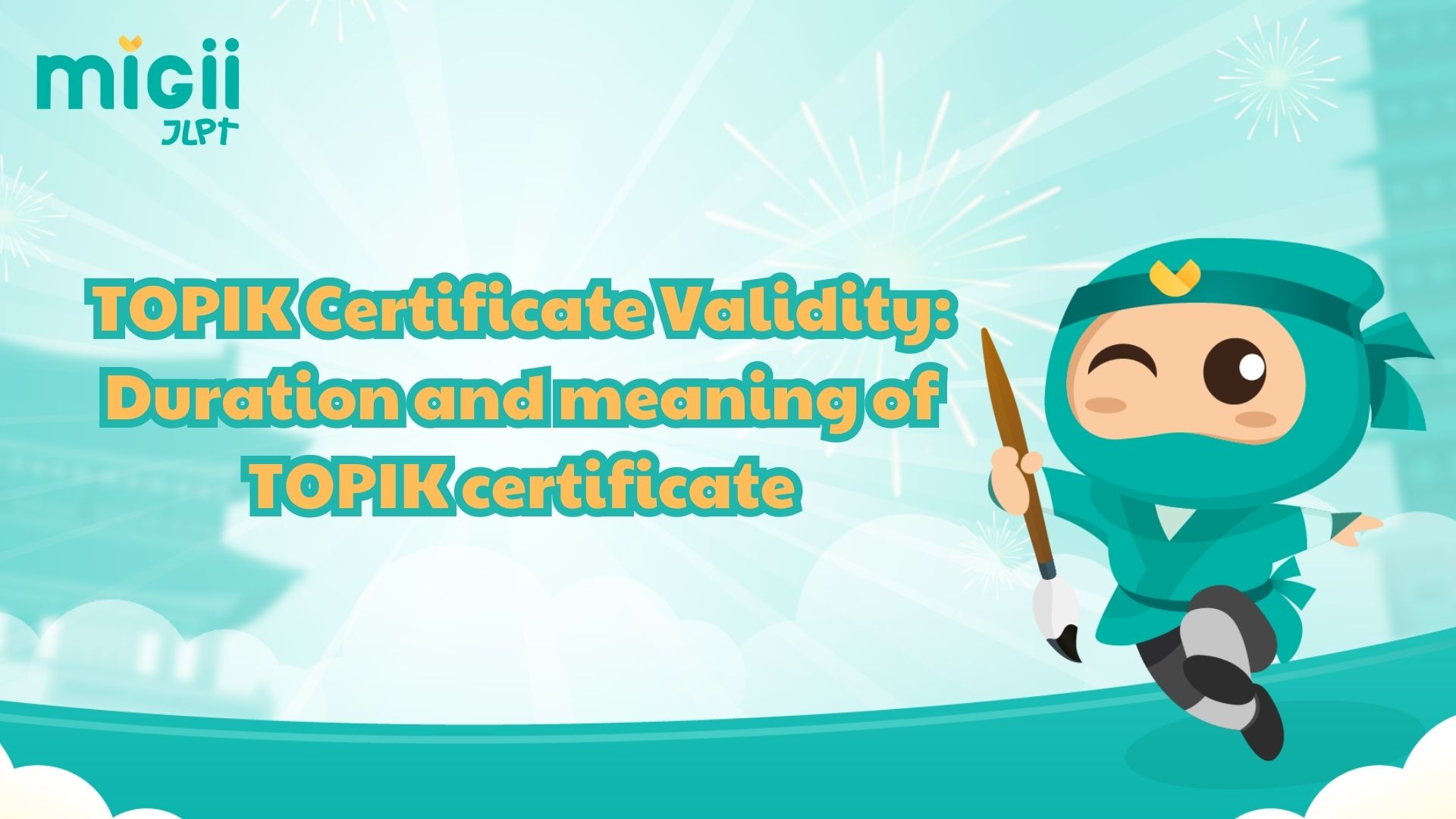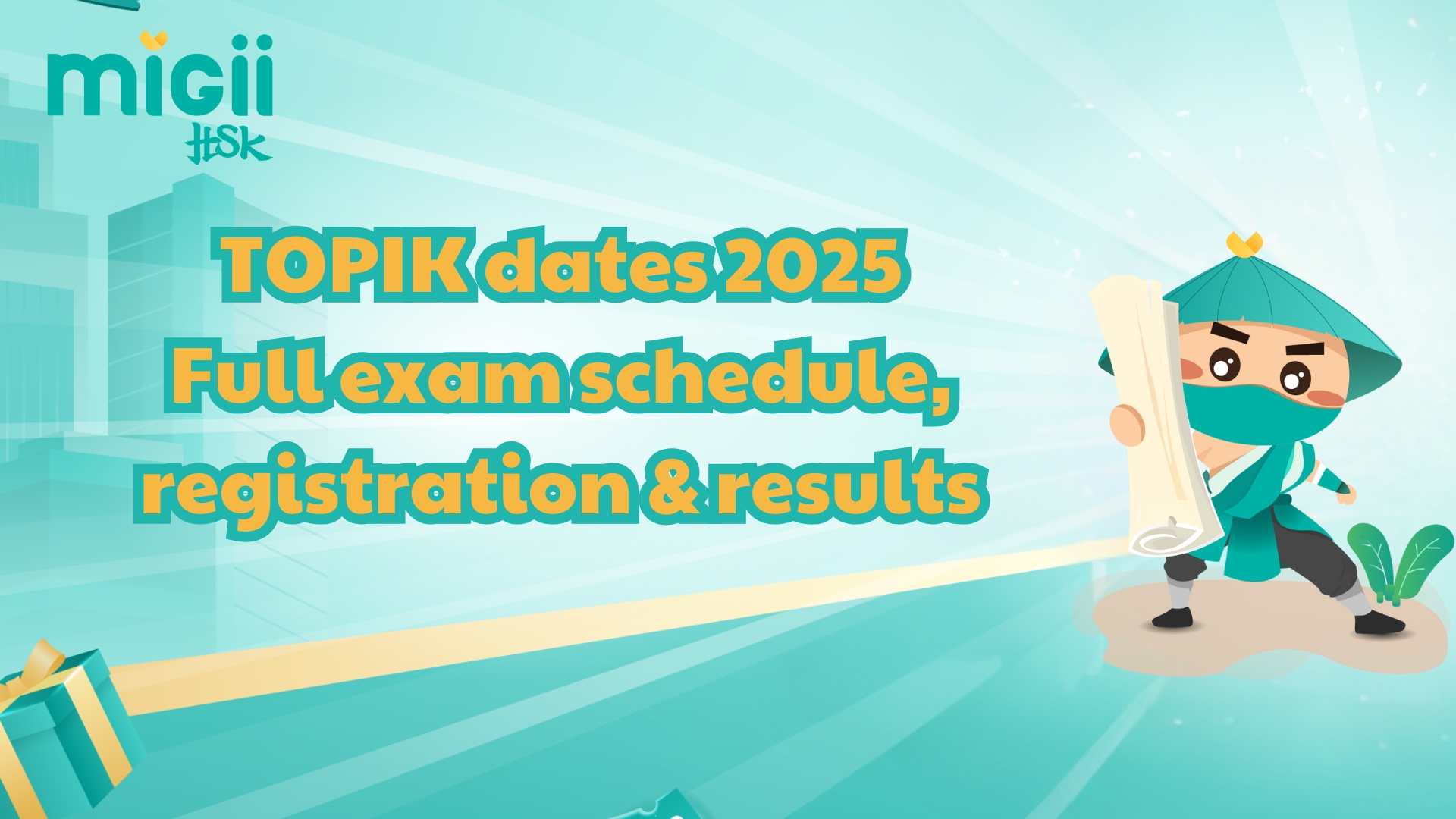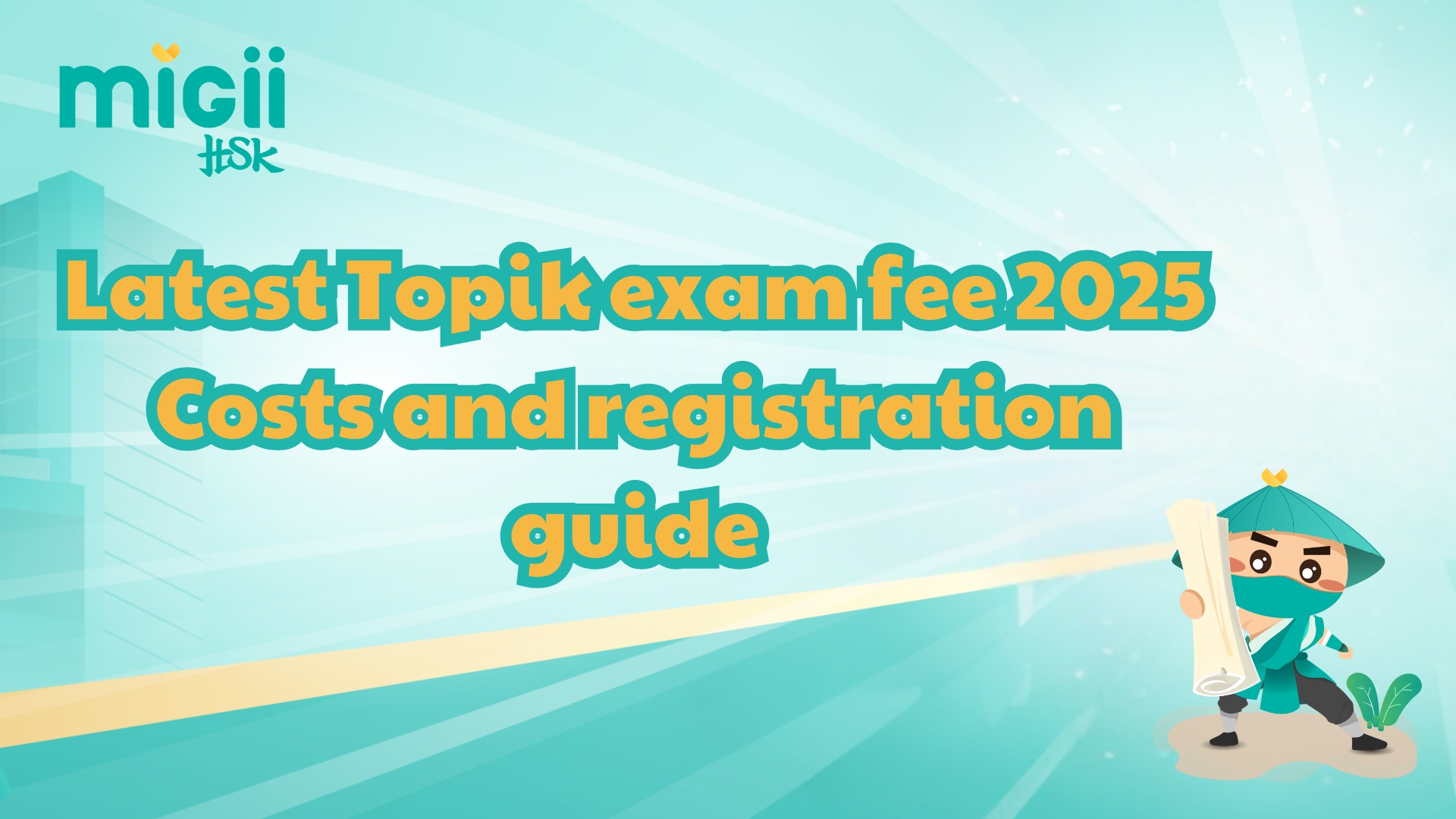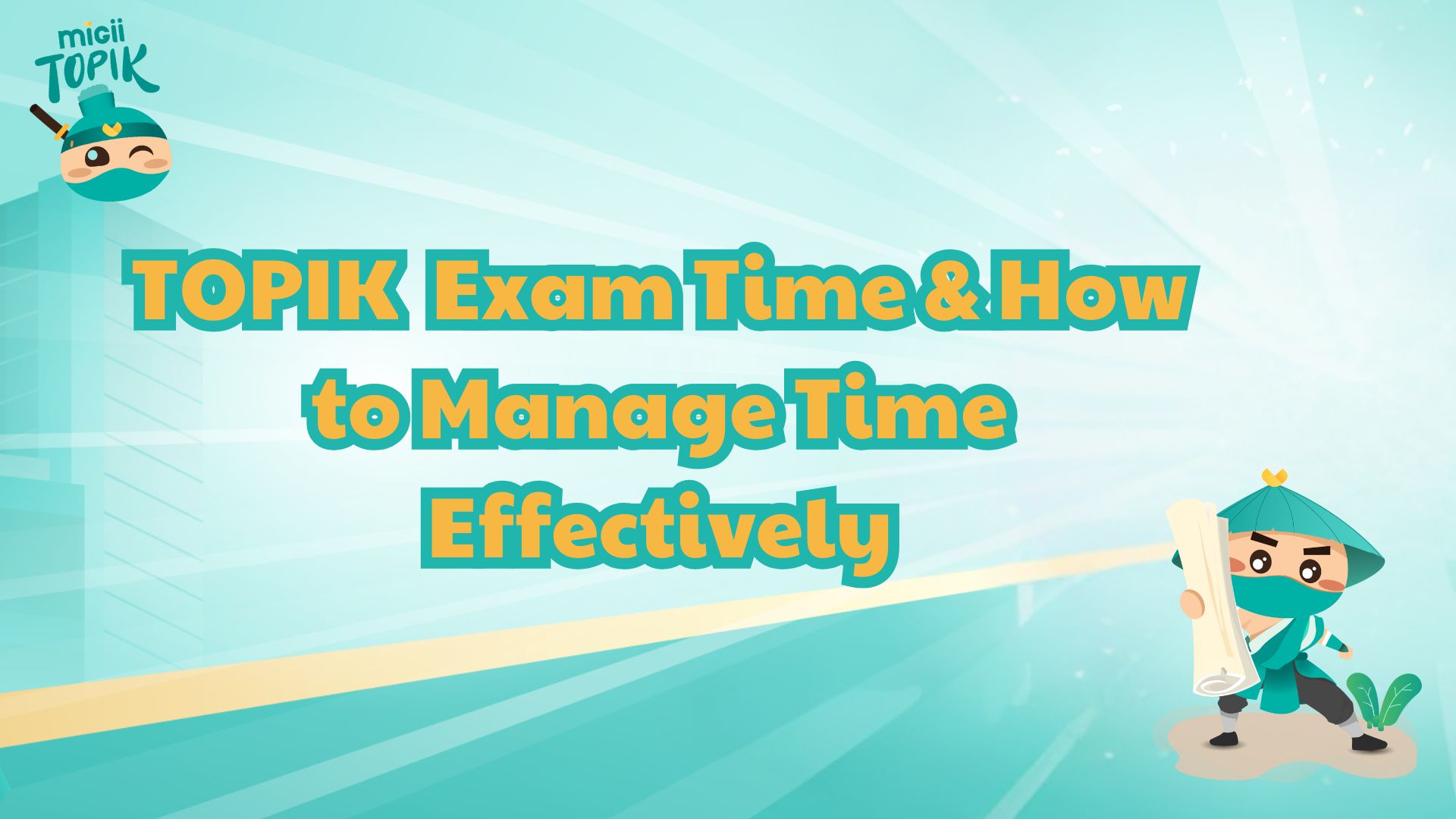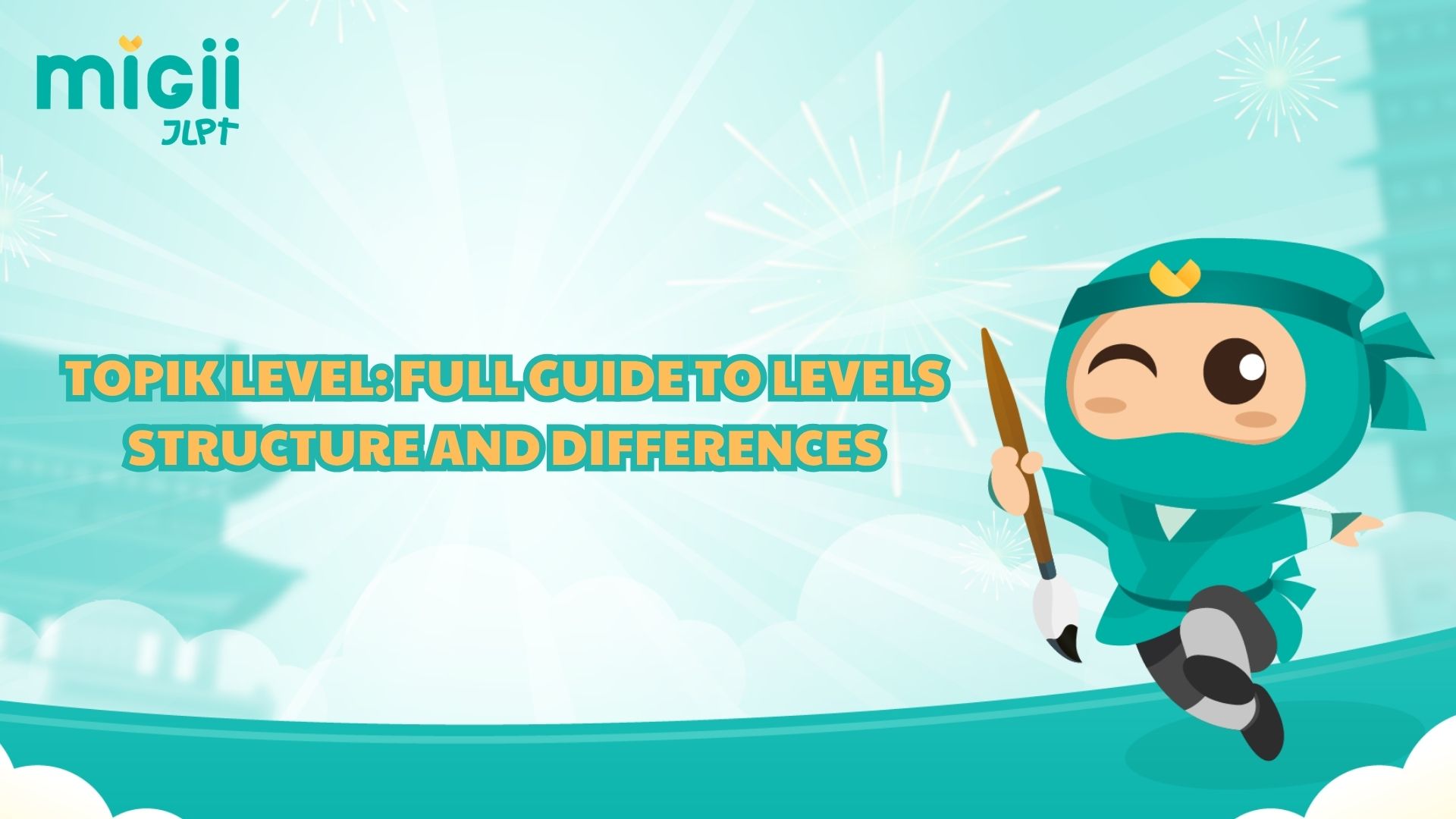JLPT N2 tips are essential if you're aiming to pass this challenging exam. This quick guide covers how to prepare for JLPT N2, including a proven JLPT N2 study guide to boost your score. Ready to study smarter and succeed? Read the full guide now!
Want to know how others prepared for the JLPT N2? Read real JLPT exam preparation experiences to learn what works.
What is JLPT N2?
The JLPT N2 level is an important goal for people who want to use Japanese in real life — for work, study, or daily life in Japan. At this level, you can understand long texts, follow conversations, and read news or business documents.
So, what is JLPT N2?
It is the second-highest level in the JLPT (Japanese Language Proficiency Test). It is harder than JLPT N3, but easier than JLPT N1 level. Many companies and universities in Japan accept N2 as proof that your Japanese is good enough for work or study. That’s why N2 is often called the JLPT business level.
If you're starting from the JLPT N5 level, which is the JLPT lowest level, reaching N2 takes time. But it shows great progress.
- What is JLPT N5 equivalent to? → It's basic Japanese: greetings, numbers, simple sentences.
- JLPT level N2 shows you can read, listen, and understand more complex language.
Moving from JLPT N5 to N1 is a journey. N2 is the key step in the middle.
If you want to know how hard is JLPT N2, the answer is: it’s not easy, but possible with the right tools. A smart JLPT N2 study plan or clear JLPT N2 study guide will help you focus. With regular practice, you will learn how to pass JLPT N2 step by step.
In the next sections, we’ll show you the best JLPT N2 tips, how to study, and how to start your JLPT N2 preparation today.
JLPT N2 Test Structure
The JLPT N2 test is divided into two main parts:
- Language Knowledge (Vocabulary, Grammar, Reading)
- Listening Comprehension
The Language Knowledge section takes more time and carries more points, which means you should focus your JLPT N2 study heavily on this part to boost your score.
Here's a breakdown of the full JLPT N2 structure to guide your JLPT N2 preparation:
Section 1: Language Knowledge & Reading (105 minutes)
|
Part |
Content |
No. of Questions |
Focus Area |
|
Vocabulary |
Kanji Reading |
5 |
Read kanji correctly |
|
Word Spelling (Orthography) |
5 |
Convert between hiragana and kanji |
|
|
Word Formation |
5 |
Understand compound words and prefixes/suffixes |
|
|
Word Meaning in Context |
7 |
Choose the right word for the sentence |
|
|
Synonyms & Rephrasing |
5 |
Find similar expressions |
|
|
Word Usage |
5 |
Use words correctly in sentences |
|
|
Grammar |
Sentence Grammar 1 |
12 |
Pick the correct grammar form |
|
Sentence Grammar 2 |
5 |
Build correct sentences |
|
|
Paragraph Grammar |
5 |
Choose the sentence that fits the paragraph |
|
|
Reading |
Short Passages |
5 |
Understand short (200-character) texts |
|
Medium-Length Passages |
9 |
Understand 500-character essays/articles |
|
|
Integrated Reading |
2 |
Compare and combine ideas from different texts |
|
|
Author's Opinion (Long Text) |
3 |
Understand author's message in 900-character text |
|
|
Information Search |
2 |
Find details in ads, flyers, etc. (~700 characters) |
Section 2: Listening (50 minutes)
|
Part |
Content |
No. of Questions |
Focus Area |
|
Task Listening |
Problem-solving Dialogs |
5 |
Understand actions, decisions |
|
Key Point Listening |
Topic-based Listening |
6 |
Identify main points |
|
Summary Listening |
General Understanding |
5 |
Catch the purpose and meaning of talks |
|
Quick Response |
Everyday Dialogues |
12 |
Choose the best natural reply |
|
Integrated Listening |
Long Conversations |
4 |
Compare, analyze and understand complete meaning |
JLPT N2 Requirements
To pass JLPT N2, you need to:
- Score at least 90 out of 180 points in total
- Score at least 19 points in each section (Language Knowledge, Reading, and Listening)
This scoring system makes JLPT N2 difficulty higher than N3, and it requires consistent effort in both reading and listening. If you're working on your jlpt n2 preparation, be sure to build a balanced study plan.
Understanding the test format is the first step. With a clear JLPT N2 study guide and regular practice, you'll be well on your way to passing JLPT N2.
JLPT N2 Vocabulary Tips: How to Tackle Each Question Type
The vocabulary section of the JLPT N2 includes 6 types of questions, with a total of 32 items. These questions test your ability to understand and apply vocabulary in context. If you're looking for practical JLPT N2 tips, mastering this section is key to improving your overall score.
Here's a quick overview:
|
Mondai |
What You Need to Do |
No. of Questions |
|
1 |
Choose the correct reading for the underlined kanji |
5 |
|
2 |
Match the hiragana word with the correct kanji |
5 |
|
3 |
Identify the correct compound word or prefix/suffix |
5 |
|
4 |
Select the best word to complete the sentence |
7 |
|
5 |
Choose the word closest in meaning (synonym) |
5 |
|
6 |
Pick the most suitable word for the given context |
5 |
JLPT N2 Vocabulary – Mondai 1: Kanji Readings
This part tests if you can correctly read the kanji underlined in the sentence. You’ll be given 5 questions, and each one asks you to pick the right pronunciation.
JLPT N2 tips for Mondai 1:
- Read the full sentence first to understand the context.
- Use Kunyomi (Japanese reading) if the kanji stands alone or has a clear meaning.
- Watch out for irregular readings, voiced sounds (でんてん), and long vowels.
- Try to answer each question in 20 seconds.
- Practice regularly using mock exams and focus on high-frequency kanji. This is a must in any solid JLPT N2 study plan.
Want to master the most common N2-level kanji? Start here with our JLPT N2 kanji guide.
JLPT N2 Vocabulary – Mondai 2: Choose the Correct Kanji
In this part, you’ll see a hiragana word underlined in the sentence, and you need to choose the correct kanji form that matches both the sound and the meaning.
Tips for Mondai 2:
- Read the full sentence carefully to understand the situation.
- Be careful of homophones – kanji that sound the same but mean different things.
- Pay attention to radicals and stroke patterns to avoid confusion.
- Aim for 20 seconds per question.
- Look at the surrounding hiragana, especially in verbs, to help identify the right kanji.
This section is a key part of your JLPT N2 preparation, especially if you're aiming to improve both vocabulary and reading speed.
JLPT N2 Vocabulary – Mondai 3: Word Formation
This section focuses on recognizing the correct form of compound words, including verb combinations, prefixes, and suffixes. It's a test of how well you understand how Japanese words are built.
How to study for JLPT N2 – Mondai 3 tips:
- Learn common prefixes and suffixes such as:
金 (money), 代 (replacement), 費 (cost), 料 (material),
and negatives like 不 (not), 無 (none), 非 (non-). - For complex verbs, understand both meaning and usage. Some compound verbs look similar but have different functions.
- Spend about 30 seconds per question, and practice using example sentences from real JLPT mock tests or apps like Migii.
A good JLPT N2 study guide will include exercises on these patterns, which are often tricky but frequently appear in the test.
JLPT N2 Vocabulary – Mondai 4: Fill in the Blank (Word Choice)
In this part, you're asked to choose the most suitable word to fill in a blank in the sentence. This is a familiar question format from JLPT N5, N4, and N3, and it follows the same pattern in JLPT N2.
Tips for Mondai 4:
- Read the whole sentence first to understand the full meaning.
- Focus on words that look or sound similar but have different usage.
- Watch for kanji-based words that share the same root but are used differently depending on the situation.
Here are some examples:
|
Word |
Meaning/Example |
|
提案 |
Suggest a solution → 「具体策を提案する」 |
|
提出 |
Submit a report → 「レポートを提出する」 |
|
提供 |
Offer a place/blood → 「場所を提供する」 |
|
提議 |
Propose a truce → 「休戦を提議する」 |
|
提言 |
Suggest a policy → 「改正案を提言する」 |
Understanding the nuance of word usage is key to selecting the right answer. Spend around 35 seconds per question in this section. This part is important in any jlpt n2 study plan, especially if you're focused on accuracy.
JLPT N2 Vocabulary – Mondai 5: Synonym Matching
This question asks you to choose the word that is closest in meaning to the underlined word in the sentence. It’s not just about knowing definitions—you need to understand tone and usage too.
JLPT N2 tips for Mondai 5:
- Read the full sentence to get the full context.
- Some words may be similar in meaning but differ in how or when they're used.
- Example: 単なる ("just / merely") → synonym: ただの.
Other examples:
- ぴかぴか = shiny (used for objects like shoes, cars)
- きらきら = sparkling (used for lights, stars)
Also watch for:
- 変化 = change (general change)
- 変更 = change with intention (like a plan change)
This section helps test deeper vocabulary knowledge. It's a great area to strengthen during your jlpt n2 preparation, especially when using a quality jlpt n2 study guide.
JLPT N2 Vocabulary – Mondai 6: Word Usage in Context
In the final part of the vocabulary section, you're given several sentences using the same word. You must choose the one where the word is used correctly in context.
Example:
余計 (よけい) = unnecessary, excessive
Often used in phrases like:
- 余計なことを言わないで (Don’t say unnecessary things)
- 余計に食べた (I ate too much)
Tips:
- Look at how the word is used in real sentences.
- Eliminate answers with grammar errors or unnatural use.
- Be aware of words that can’t be used in certain contexts.
For example: ✖ 余計があったら、ひとつ貸してもらえませんか
(Incorrect: 余計 is not used to ask to borrow something extra)
This section is great for learners who want to pass JLPT N2 by mastering real-world usage, not just definitions.
JLPT N2 Grammar Tips: How to Handle All 3 Question Types
The grammar section in the JLPT N2 test checks how well you understand and use Japanese grammar in different contexts. There are 3 types of grammar questions in this section, with a total of 22 items.
JLPT N2 Grammar Structure
|
Mondai |
Task Description |
No. of Questions |
|
7 |
Choose the correct word or grammar point to complete the sentence |
12 |
|
8 |
Reorder sentence parts and select the correct one for ★ |
5 |
|
9 |
Choose the best sentence or phrase to fit into a short passage |
5 |
These question types appear in every test, so practicing them is an essential part of your JLPT N2 study plan.
Mondai 7: Grammar Fill-in-the-Blank
This part gives you sentences with a blank and asks you to choose the correct grammar form, adverb, or verb conjugation.
JLPT N2 tips for Mondai 7:
- Study common grammar patterns such as わけ、もの、こと.
- Be careful with “double negatives” like ~ないではない (which does not mean “not”).
Understand how similar patterns differ. For example: 最終のバスに間に合わなくて困っていた(____)、運よくタクシーが通りかかり、無事帰宅できた。
Correct answer: ところに = "just at that moment"
To pass JLPT N2, you’ll need strong grammar knowledge and lots of practice choosing between tricky options.
Mondai 8: Sentence Ordering
In Mondai 8, you’re given sentence parts with ★ to mark one part. Your job is to:
- Rearrange the sentence in the right order
- Choose the correct part for the ★ position.
Tips for Mondai 8:
- Start by finding the subject and verb.
- Then link the sentence parts logically.
- Example: 田中選手が今シーズン____ ★ ____ のニュースを見て驚いた。
Correct answer: 活躍するのを (used naturally in the sentence)
This task may look hard, but once you practice regularly, it will become faster. Try using sample questions from a trusted JLPT N2 study guide.
Mondai 9: Grammar in Context (Short Passages)
This part checks your understanding of grammar in larger contexts. You will read a short paragraph and choose the sentence or phrase that fits best in the blank.
JLPT N2 preparation tips for Mondai 9:
- Focus on meaning, tone, and sentence flow.
- Look at the sentence before and after the blank.
- Example: おもちゃというと、ただ子どもが遊ぶだけのものだと____。
Correct answer: 考えられがちです
(“Many people tend to think so” – expresses a common opinion)
This question type helps you build reading and grammar skills at the same time. Try to answer each one in under 1 minute to simulate real test timing.
Final Tip: Balance Grammar with Context
Grammar in JLPT N2 is not just about rules—it’s about knowing when and how to use those rules. Studying with context-based questions will help you learn faster and retain more.
Include Mondai 7–9 practice in your JLPT N2 study every week, and you’ll be better prepared on test day.
JLPT N2 Reading Tips: How to Master the Dokkai Section
The Reading section (読解) in the JLPT N2 test is known for being one of the most important and time-consuming parts of the exam. It tests your ability to read and understand different types of texts — short, medium, and long — and to find specific information quickly.
To do well, you need strong reading strategies, good time management, and a clear focus on what the questions are asking.
JLPT N2 Reading Structure (Dokkai)
|
Mondai |
Task Description |
No. of Questions |
|
10 |
Read short passages (about 200 characters) |
5 |
|
11 |
Read medium-length passages (about 500 characters) |
9 |
|
12 |
Compare two related texts (total around 600 characters) |
2 |
|
13 |
Read a long opinion-based passage (about 900 characters) |
3 |
|
14 |
Find information in a long text (flyers, notices, etc.) |
2 |
JLPT N2 Reading – Mondai 10: Short Passages
This section gives you short texts (about 200 characters each), usually about everyday life or work topics. Each passage is followed by a question focusing on a key idea or specific detail.
Example:
Question: この筆者から見た「仕事ができる人」の特徴はどんなことか。
(What does the writer think is a trait of a good worker?)
In the passage, the author says a good worker knows how to analyze their own strengths and decide which jobs are suitable or not. So, the correct answer is:
始めに仕事が自分の能力に合っているかを分析し、あらゆる仕事を上手にこなすこと。
→ "First, analyze whether the job matches your skills, then handle all tasks well."
JLPT N2 Reading Tips for Mondai 10:
- Read the question first. This helps you know what to look for.
- Find keywords in the question and scan for them in the passage.
- For “main idea” questions, pay special attention to the first and last sentence — authors often give their opinion there.
- If needed, read the whole passage again. Since it's short, it won’t take too long.
- Ideal time: 2 minutes per question.
These types of passages appear early in the test and are great for warming up. They also offer a quick chance to earn points if you stay focused.
Practicing with real examples is a great way to improve your speed and accuracy. Add these to your weekly JLPT N2 study routine, especially if you're aiming to improve your reading comprehension as part of your jlpt n2 preparation.
JLPT N2 Reading – Mondai 11: Medium-Length Passages
In Mondai 11, you will read three medium-length passages (around 500 characters each) and answer 9 questions in total. These questions test your understanding of both the main idea and specific details.
Example:
Question: 「企業の優れたリーダー」とはどのようなリーダーか。
(What is a good leader in a company, according to the author?)
Correct answer: A leader who helps their employees grow and respects their independence.
JLPT N2 reading tips for Mondai 11:
- Read the question first to know what to look for.
- Focus on key phrases and sentence transitions.
- Try to answer each question in 3–4 minutes.
- Practice using real N2 reading passages as part of your jlpt n2 study guide.
JLPT N2 Reading – Mondai 12: Comparison of Two Opinions
This part has 2 questions based on two short opinions or suggestions on the same topic. Your goal is to identify differences or relationships between the two viewpoints.
Example:
Question: What is the difference between A and B’s answers to the person asking for advice (相談者)?
- A tells the person to respect their own interests and explain them gently to their boyfriend.
- B focuses more on the boyfriend’s feelings and suggests trying a new look for him.
Correct answer: A focuses on the person's preferences, while B considers the boyfriend’s point of view.
Tips:
- Watch for contrast words like:
一方で (on the other hand), または (or), 逆に (on the contrary) - Understand the main idea of each speaker.
- Spend 3–4 minutes per question.
- Practice this format often — it trains your comparison and summary skills, which are important for passing JLPT N2.
JLPT N2 Reading – Mondai 13: Long Text with Author’s Opinion
Mondai 13 includes one long passage (about 900 characters). You’ll get 3 questions that test your ability to understand the main point, author’s message, and the overall structure of the text.
JLPT N2 preparation tips for this part:
- Read the question first to identify what kind of info to look for.
- Then scan the passage to find the main idea and author's stance
- Focus on transition words like: しかし (however), つまり (in short), なぜなら (because)
These markers often guide you to the author’s key message.
Spend about 5 minutes per question, and train with long texts regularly to improve comprehension and time control.
JLPT N2 Reading – Mondai 14: Information Search
This final part tests your ability to find specific details in documents like ads, flyers, schedules, or announcements. You’ll get 2 questions and need to extract the exact info asked.
How to prepare for JLPT N2 – Mondai 14 tips:
- Read the question first to know what to search for (e.g., time, condition, rule).
- Don’t read the whole passage — skim for relevant numbers, dates, or phrases.
- Be careful with tricky or similar-looking options.
- Ideal time: 2–3 minutes per question.
This is the most “practical” reading section and gives you a chance to score fast, especially if you practice this format in your jlpt n2 study routine.
JLPT N2 Listening Tips: How to Handle the Listening Section
The listening section (聴解) in JLPT N2 is often seen as one of the hardest parts of the test. It requires strong focus and the ability to quickly understand conversations, short talks, or real-life announcements.
This part not only tests your vocabulary and grammar, but also your listening logic — the ability to follow a conversation and identify key actions or decisions. To succeed, you need to be familiar with the test format and practice smart.
JLPT N2 Listening Structure Overview
|
Mondai |
Task Description |
No. of Questions |
|
1 |
Understand the main idea of a conversation |
5 |
|
2 |
Understand details of a short conversation |
6 |
|
3 |
Catch the overall message of a dialogue |
5 |
|
4 |
Respond naturally to short questions |
12 |
|
5 |
Analyze and compare information in a long dialogue |
4 |
JLPT N2 Listening – Mondai 1: Main Idea Questions
This type focuses on understanding the core message of a short talk or everyday situation. You don’t need to remember every word — just focus on the speaker’s main decision, action, or purpose.
Example:
You may hear a conversation about packing items into a box. The question will ask: “Which items will be packed?” The speaker chooses ア (product catalog) and イ (company brochure), so the correct answer is 1. ア イ.
JLPT N2 tips for Mondai 1:
- Read the question before the audio starts.
- Pay attention to keywords like item names or decisions.
- Watch out for distractions — sometimes, the speaker mentions other choices just to confuse you.
- This type is practical and reflects real-life listening.
This is a great part to score early points. Include this in your regular JLPT N2 listening practice routine.
JLPT N2 Listening – Mondai 2: Detail-Based Questions
Mondai 2 tests your ability to understand specific details in a short talk or conversation.
Format:
- You hear the question first.
- You have about 10 seconds to look at 3 or 4 answer choices.
- Then, you listen to the dialogue and choose the correct answer.
Example:
The question asks: Why didn’t the person attend the event?
The conversation mentions 出張 (business trip), 結婚式 (wedding), and 研究 (research). You have to catch which reason was actually given.
Tips for Mondai 2:
- Use your preview time to guess possible answers.
- Focus on key words related to time, reason, or action.
- Eliminate answers that are mentioned but rejected.
- Spend time practicing with similar dialogues to train your ears.
This section helps build your logical listening and is very useful for both test and real-world Japanese.
JLPT N2 Listening – Mondai 3: General Understanding (No Visuals or Questions First)
This part is different from previous sections. In Mondai 3, you won’t see any pictures or hear the question before the audio begins. Instead, you must listen to the entire conversation first, and then answer the question.
The key here is to understand the overall idea and remember key details.
JLPT N2 listening tips for Mondai 3:
- Focus on the main topic and important facts.
- Use the 5W+1H method:
Who, What, When, Where, Why, How. - Don’t try to write everything. Just note key words like names, times, or decisions.
- Listen for signals like:
- 要するに (in short)
- つまり (in other words)
These often point to the main message.
Practice with Japanese radio or news shows to improve your ability to catch the main point quickly — a key skill for this type of question and real-life listening.
JLPT N2 Listening – Mondai 4: Instant Response
In Mondai 4, you’ll hear one short question or comment, followed by three possible replies. You must choose the most natural and appropriate response.
This tests your ability to understand tone, context, and natural conversation.
Tips for Mondai 4:
- Pay close attention to the speaker’s emotion, intent, and casual vs formal style.
- Practice real-life dialogues — these questions are similar to everyday Japanese conversations.
- If you've studied for JLPT N3 or N4, this format will be familiar — but expect more complex topics in N2.
- Focus on intonation and keywords to help you choose the correct answer.
JLPT N2 Listening – Mondai 5: Long Conversations (2–3 Speakers)
Mondai 5 is a unique challenge at the JLPT N2 level. You’ll hear a long conversation with two or three speakers, then answer 1 or 2 questions about it.
This tests your ability to follow complex conversations and remember multiple details.
Example:
A dialogue about train schedules. You may be asked:
- What time does the male speaker’s train leave?
- Which train does the female speaker choose?
Tips to pass JLPT N2 Mondai 5:
- Write short notes during the listening: time, location, choices, final decisions.
- Skip irrelevant details and focus on decisions made during the conversation.
- Use practice materials with full scripts to learn how real-life discussions flow.
- News, podcasts, and long interviews in Japanese can help train your brain to stay focused longer.
This section rewards those who can listen actively and summarize quickly. Strong note-taking = high score.
This section is perfect for improving your spoken Japanese logic and quick reflexes. Add daily listening and shadowing exercises to your jlpt n2 preparation routine to master this format.
FAQ – JLPT N2: All You Need to Know to Pass
How hard is JLPT N2?
JLPT N2 difficulty is moderate to high. You need strong skills in vocabulary, grammar, reading, and listening. It’s more difficult than N3 but much easier than JLPT N1 level.
What are the JLPT N2 requirements?
To pass JLPT N2, you must score at least 90 out of 180 total points and 19 points in each section (Language Knowledge, Reading, Listening).
What’s the difference between JLPT level N5 and JLPT level N2?
- JLPT level N5 tests basic knowledge like hiragana, katakana, and simple grammar.
- JLPT N2 level includes reading long texts, understanding complex grammar, and real-life listening situations.
How do I go from JLPT N5 to N1?
To move from JLPT N5 to N1, you should study step-by-step through each level: N5 → N4 → N3 → N2 → N1. N2 is a major milestone before reaching full fluency.
How to prepare for JLPT N2 effectively?
The best way to prepare for JLPT N2 is to:
- Follow a JLPT N2 study guide
- Build a realistic JLPT N2 study plan
- Practice with mock tests and past exams
- Use apps, books, and online lessons consistently
How to study for JLPT N2?
To study for JLPT N2, divide your time across:
- Grammar (文法)
- Vocabulary (語彙)
- Reading (読解)
- Listening (聴解)
Use daily review, reading strategies, and frequent testing.
Practice makes perfect — try our JLPT N2 exercises to boost your grammar, vocab, and reading speed.
How to pass JLPT N2?
To pass JLPT N2, follow these tips:
- Learn and revise all key grammar forms
- Practice reading long texts with questions
- Listen to natural-speed conversations daily
- Follow a clear jlpt n2 study plan over 3–6 months
Simulate the real exam now with a free JLPT N2 mock test and track your readiness.
What are the best JLPT N2 tips?
Top JLPT N2 tips:
- Read the question before reading or listening
- Take short notes during listening
- Focus on high-frequency grammar and kanji
- Simulate test conditions regularly
Conclusion
Ready to conquer the JLPT N2 level? With the right JLPT N2 tips, a solid study plan, and focused practice, passing JLPT N2 is within reach. Stop guessing — start winning.
Download Migii JLPT now and boost your score with smart, structured learning!
